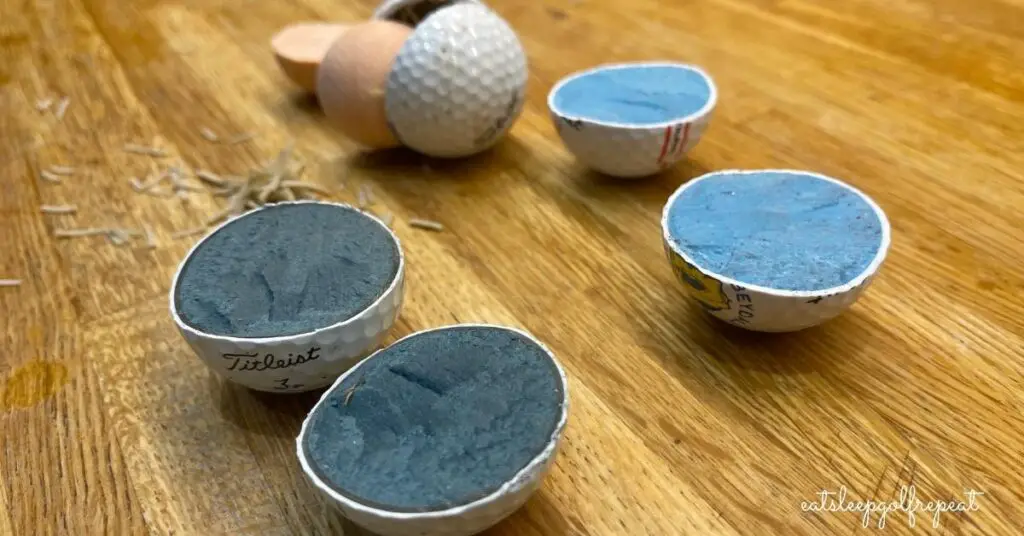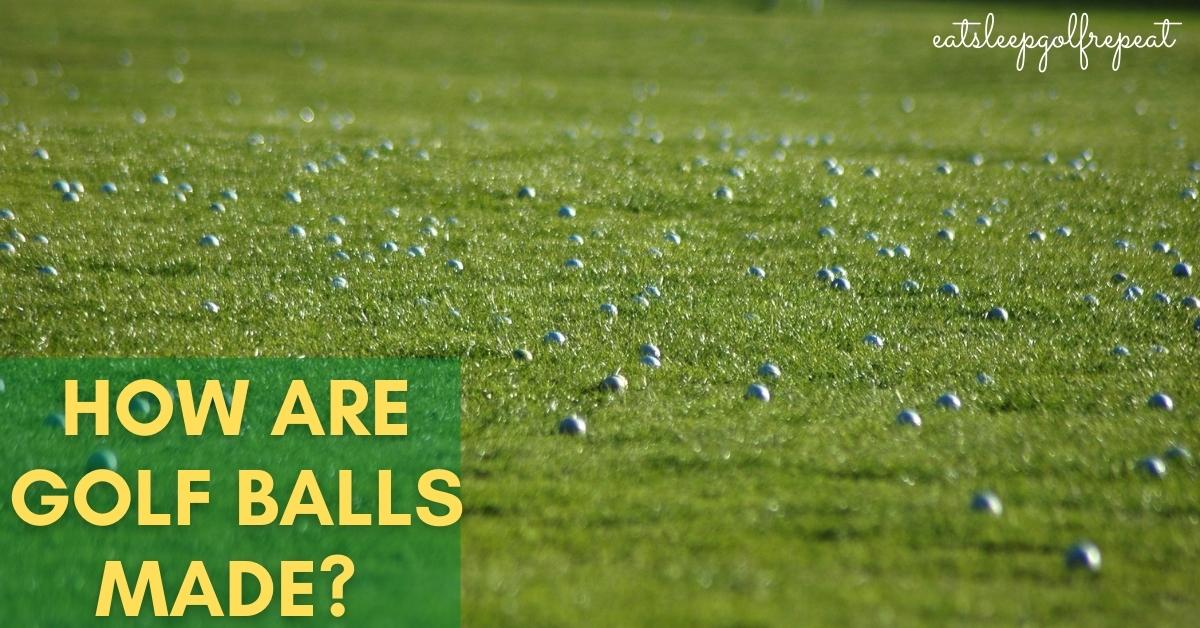
How Are Golf Balls Made?
When you’re out on the golf course, have you ever looked at your golf ball and wondered what they’re made of?
While the golf ball is arguably one of the smallest pieces of sports equipment, it is also one of the most intriguing.
Inside that little white cover, there is a world of innovation and technology just waiting to be discovered.
In this article, we wanted to explore the humble golf ball and delve into where it comes from and how it is made.
Types Of Golf Ball
When asking the question of how golf balls are made, you have to keep in mind that the process will vary depending on the type of golf ball and when it was made.
You see over time, the way that these balls have been made has changed dramatically.
Moreover, in modern times, there are standards that dictate the size that a golf ball should be, although that wasn’t always the case.
There was a period of around 50 years between the 1930s and the late 1980s where European and American standards did not match so golfers around the world were not considered to be playing equally.
Of course, modern standards all match so there’s no worry about anyone being at an advantage.
Before we get into exactly how golf balls are made, let’s take a look over history and see how things have developed throughout time.

The First Golf Balls
Wood Golf Balls
It is widely accepted that the Scots invented golf but there isn’t an exact known date of when this occurred.
However, back in 1457, the parliament in Scotland banned the game, so it must have been pretty early on when it was created. Back in those days, it is believed that golf balls were carved from wood.
Leather Golf Balls
This type of golf ball is rather different to those that we are used to seeing today and was made from a leather sack made of three parts.
These parts were stitched together before being filled with wet goose feathers.
As the feathers began to dry out, they would expand and fill out the sack, creating a much more spherical design.
After this, the balls were painted but the process was incredibly time consuming and it could take as long as eight hours to make one ball.
What’s more, the design didn’t stay popular for long owing to the lack of durability, especially after people had become so used to playing with wood.
On the other hand, they gave an excellent flight.
The Invention of The Rubber Golf Ball
Thanks to the featheries, golf quickly became a game that was reserved for the rich.
These balls didn’t last long and were very expensive to create.
It would take more than 200 years for the game to become popular with the masses again owing to the invention of cheaper golf balls.
It was in the mid 1800s that a new type of ball came onto the market.
It was commonly known as a Guttie, or to call it by its full name, the Gutta Percha.
It hadn’t been long since the discovery of rubber and thanks to innovations in manufacturing, it was now possible to mass produce the golf balls.
This was done by pouring hot rubber into a mould; simple, yet incredibly effective.
However, it took some time and trial and error to realise that this process had a downside; the smooth balls didn’t fly as far and so a new process of hammering gave the balls more texture and greater flight ability.
It was this discovery that led golf ball manufacturers down the route that we follow today and the golf ball dimple would be the final outcome of this.

Types Of Modern Golf Balls
It is easy to see that, over the course of time, the golf ball has come a long way. However, even today, we see various types of ball.
Typically, there are two piece, three piece and four piece golf balls, each having a different number of layers, as technology is progressing manufactueres such as Taylormade are producing 5 and 6 piece golf balls like the Taylormade TP5n which is a 5 piece.
Titleist have the largest market share and the four piece golf ball the Titleist Pro V1 is the main stay on all the professional golf tours.
● The two piece ball features a rubber core and a hard outer plastic layer.
● The three piece ball features a core, a rubber coating and then the plastic cover.
● The four piece ball features a coating of a medium hardness that sits between the rubber and outer plastic layers.
How Modern Golf Balls Are Manufactured
If you are talking about a three piece golf ball then the manufacturing process is one that is incredibly complex.
Did you know that these balls can take up to a month to make and involve as many as 80 processes?
However, the two piece golf ball is a little simpler, yet still involves a few production steps that are typically completed over the course of a day.
The first step of the process is to form the centre of the ball.
The ingredients are a careful blend of materials that react chemically in order to produce a compound that is very similar to rubber. This compound undergoes a pressure and heat treatment which allows the core to form.
At this stage, it measures around one and a half inches.
Next, the cover of the ball is created and those all important dimples.
This is achieved using compression moulding or injection moulding. With the latter, molten plastic is injected into the core which has been placed inside a dimpled cavity.
As this happens, the pressure and heat applied causes the plastic to attach to the centre which then forms into the finished shape of the ball.
When the plastic cools, it hardens and the pins that held the core in place within the cavity can be removed.
If compression moulding is used the process is slightly different. In this case, the cover of the ball undergoes injection moulding to create two hollow halves which are then placed around the core. Heat is then applied which causes the two halves to press together.
The next step is to get the ball looking its best and this is typically done by first removing any rough spots.
In the industry, these are known as flash spots. After this, the ball is placed onto two posts that spin around while two coats of paint are applied.
Doing it this way allows for an even coverage with the spray guns. Finally, a clear paint is applied that gives the ball its shine.
This also helps to ensure that it doesn’t scuff easily.
The paint is dried by using a large drying machine.
The balls are placed in containers and are run through the drier before being packaged into their final boxes.

Conclusion
Golf has been played for at least 700 years but there is evidence to suggest that similar games were played long before this.
In any case, one of the most important components of a game of golf is the ball; without it, you wouldn’t be able to play.
Over time, the golf ball has undergone quite a few transformations, beginning its journey as a wooden sphere.
The leather golf ball, known as a featherie, was popular for around 200 years, but owing to their lack of durability, they were then replaced by the rubber ball.
Up until today, rubber is a staple material in the manufacturing of golf balls, although the way the balls are made is far more modern and innovative.

